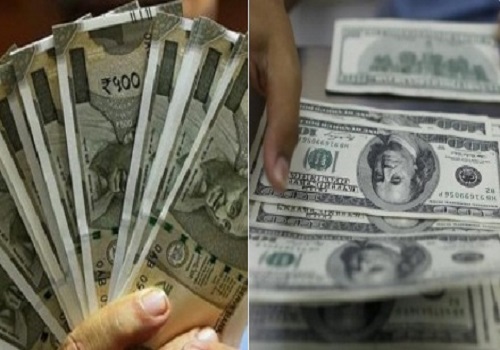Dollar poised for weekly decline; US jobs data up next

The dollar fell broadly on Friday in a bout of positive risk sentiment following upbeat big tech earnings on Wall Street, while traders awaited U.S. jobs data due later in the day to gauge how soon the Federal Reserve could begin easing rates.
The closely watched nonfarm payrolls report later on Friday comes on the heels of the Fed's latest policy meeting where rates were kept steady as expected, though Chair Jerome Powell pushed back against market expectations of rate cuts in March.
Ahead of the release, the greenback dipped against a basket of currencies, extending a 0.5% fall in the previous session.
The dollar index was last at 103.02 and on track for its first weekly decline for the year.
The risk-on mood helped the Aussie tack on 0.17% to last trade at $0.6583, though it was on track to end the week only about 0.2% higher, as its gains were capped by a sharp slowdown in domestic inflation.
The New Zealand dollar rose 0.07% to $0.6149 and was on track for a weekly rise of nearly 1%, its best performance in over a month.
"If we have a relatively soft payrolls number... then I think you'd probably see the needle move a little bit further back, closer to 50-50" for March rate cut expectations, Ray Attrill, head of FX strategy at National Australia Bank, said of Friday's U.S. jobs report.
"I think the dollar will be quite sensitive to that."
Market pricing now shows a 38% chance of a Fed cut in March, as compared to an over 70% chance a month ago, according to the CME FedWatch tool. A cut in May is almost fully priced in.
"We continue to expect three rate cuts to take place in 2024, with the first cut taking place mid-2024, (followed) by subsequent cuts each quarter," said Raf Choudhury, investment director of multi-asset at Abrdn.
"We do think the market pricing in five or more cuts as soon as March seems ambitious and have more confidence in the dot plots which signal three cuts this year."
Still, the prospect of lower U.S. rates have sent Treasury yields sliding, with the two-year yield, which typically reflects near-term interest rate expectations, last at 4.2086%. It has fallen roughly 15 basis points this week.
The benchmark 10-year yield, which has meanwhile tumbled nearly 30 bps for the week, last stood at 3.8840%.
Analysts said renewed jitters over regional U.S. banks this week also sparked a flight into the safe-haven Treasuries. Bond yields move inversely to prices. [US/]
In other currencies, the yen gained 0.1% to last stand at 146.29 per dollar. It was poised for a weekly gain of nearly 1.3%, its best week in over a month.
A summary of opinions from the Bank of Japan's (BOJ) January meeting out this week showed policymakers discussed the likelihood of a near-term exit from negative interest rates and possible scenarios for phasing out the bank's massive stimulus programme.
That highlighted a growing view within the board that conditions were falling in place to soon pull short-term interest rates out of negative territory, which would be Japan's first interest rate hike since 2007.
Elsewhere, sterling rose 0.09% to $1.2754.
The Bank of England (BoE) kept interest rates at a nearly 16-year high on Thursday but opened up the possibility of cutting them as inflation falls.
"The (Monetary Policy Committee) - following the Fed - kept the Bank Rate target at 5.25% and dropped the 'tightening' bias in favour of a neutral bias," said Thierry Wizman, Macquarie's global FX and rates strategist.
"But, also like the Fed's tone... there was a decidedly cautious aspect to the MPC's communications to counter the switch in the policy bias."
The euro edged 0.07% higher to $1.0879 and was eyeing a weekly gain of more than 0.25%.
Data on Thursday showed euro zone inflation eased as expected last month but underlying price pressures fell less than forecast, likely boosting the European Central Bank's argument that rate cuts should not be rushed.
























